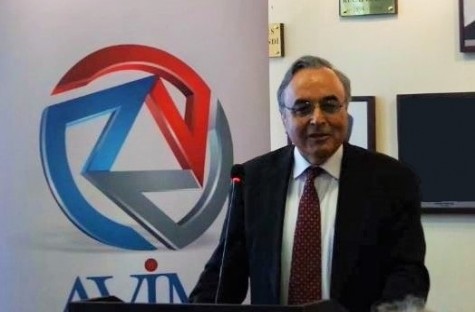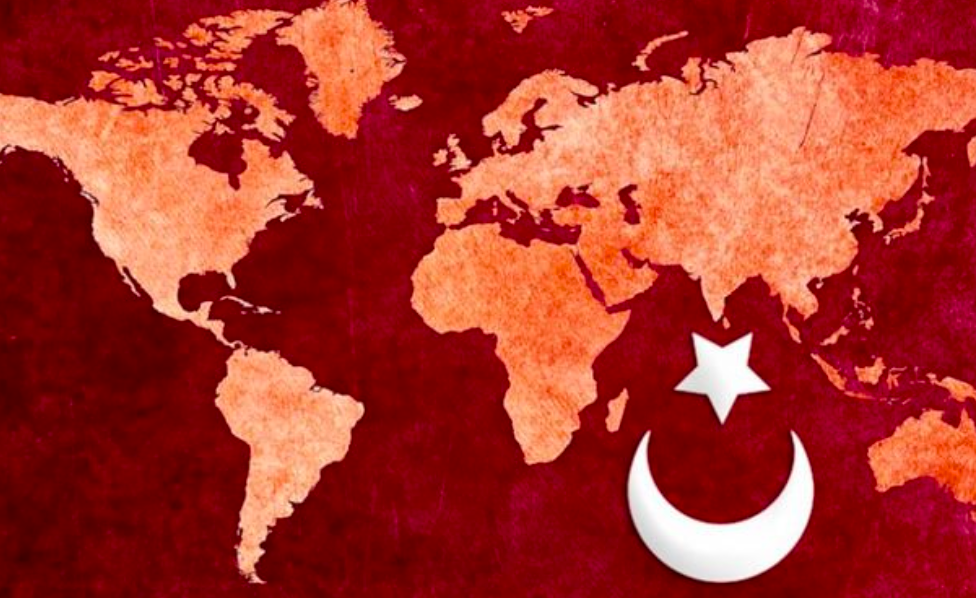
The Armenian Catholicosate of Cilicia, which is currently situated in the town of Antelias near Beirut, made an application to the Constitutional Court of Turkey in April 2015 and requested the return of the property located in the Kozan (Sis) district of Adana that it had abandoned on its own accord in 1921.[1] In its verdict delivered on June 2016,[2] the Constitutional Court stated that the Armenian Catholicosate of Cilicia’s application was rejected on procedural grounds, since the Catholicosate had not first exhausted internal remedies prior to its application to the Constitutional Court.[3] Although internal remedies have been not exhausted, at the end of 2016, the Catholicosate filed an application to the European Court of Human Rights (ECtHR) concerning the claimed property.
The spiritual leader of the Armenian Catholicosate of Cilicia Aram I, who is known for his harsh and radical attitude towards Turkey and Turks among senior officials of the Armenian Apostolic Church, probably convinced that the ECtHR is taking too long in evaluating Catholicosate’s application, called on the ECtHR to accelerate its handling of the application.[4] In his call, Aram I, making his own interpretations of the political developments in Turkey, tried to defame Turkey in the eyes of the ECtHR.
Considering European Court of Human Right’s way of handling of applications and its jurisprudence, the Armenian Catholicosate of Cilicia made an incorrect application from the very beginning. When looked at the jurisprudence of the ECtHR, the Court first of all looks whether internal remedies in the country regarding which a complaint is made are exhausted. Yet, the Armenian Catholicosate of Cilicia, as stated in the detailed ruling of the Constitutional Court of Turkey, did not even attempt to exhaust the clearly defined internal remedies.
Furthermore, as observed in the ECtHR Perinçek v. Swizerland case, which was decided upon in Perinçek’s favor, the ECtHR reacts negatively to any attempts at pressuring, lobbying, guiding etc. regarding its rulings. Aram I, by making such a call, blatantly attempted to guide ECtHR’s evaluation of the Catholicosate’s application.
Why did the Armenian Catholicosate of Cilicia make such an application which will likely result in failure and lead to a loss of prestige? The answer to this question is related to the approach of obsessively labeling the events of 1915 as genocide. Those who support the genocide narrative try to voice and propagate this narrative in every occasion, irrespective of whether it is an appropriate occasion. The Catholicosate’s application is a propaganda attempt, rather than an effort for the restitution of a property or an effort to seek justice. As a matter of fact, a speech made by Aram I in 2014 is an indication that the real motive behind the Catholicosate’s application is propaganda:
If Turkey’s Constitutional Court rejects our claims, we will immediately present our case to the European Court of Human Rights… If we win the case, the honor and victory will belong to our nation and church. And if we lose the case, that will also be a victory, because in presenting our case we will have reminded the perpetrators [here he is talking about Turks, meaning that he holds today’s Turks accountable for the events that transpired a century ago] and the international community that the Armenian nation remains committed to demanding its rights no matter the number of years that distance it from the onset of the genocide.[5]
As it can be understood from the above quote, Aram I, driven by his ambition for “honor” and “victory” and his blinding zeal to spearhead the efforts of his camp (constituted by Armenia and the Armenian diaspora) to make legal demands against Turkey, made a legally insufficient application to the ECtHR, and even tried to guide a court with international prestige to act in line with his own ambitions.
*Photo: Public Radio of Armenia
[1] Mehmet Oğuzhan Tulun, “The Armenian Catholicosate of Cilicia’s Application to the Constitutional Court of Turkey”, AVİM, commentary, 21.12.2016, http://avim.org.tr/en/Yorum/THE-ARMENIAN-CATHOLICOSATE-OF-CILICIA-S-APPLICATION-TO-THE-CONSTITUTIONAL-COURT-OF-TURKEY-1
[2] Türkiye Cumhuriyeti Anayasa Mahkemes (Constitutional Court of Turkey), “Karar: Kilikya Ermeni Katolikosluğu Başvurusu (Başvuru Numarası: 2015/7661)”, date of verdict: 15.06.2016, date of access: 12.04.2017, http://www.kararlaryeni.anayasa.gov.tr/Content/pdfkarar/2015-7661.pdf
[3] Tulun, “The Armenian Catholicosate Of Cilicia’s Application to the Constitutional Court of Turkey”
[4] “Catholicosate of Cilicia Proposes ECHR to Accelerate Trial of Sis Catholicosate”, Armenpress, 04.04.2017, date of access: 12.04.2017, http://www.armenpress.am/eng/news/885520/catholicosate-of-cilicia-proposes-echr-to-accelerate-trial-of-sis-catholicosate.html ; Siranush Ghazanchyan, “His Holiness Aram I asks ECHR to declare it has jurisdiction over the claim for return of Seat in Sis”, Public Radio of Armenia, 04.04.2017, date of access: 12.04.2017, http://www.armradio.am/en/2017/04/04/his-holiness-aram-i-asks-echr-to-declare-it-has-jurisdiction-over-the-claim-for-return-of-seat-in-sis/
[5] “Catholicosate of Cilicia to Sue Turkey over Historic Headquarters in Sis”, The Armenian Weekly, 19.09.2014, date of access: 12.04.2017, http://armenianweekly.com/2014/09/19/sis/
© 2009-2025 Center for Eurasian Studies (AVİM) All Rights Reserved
No comments yet.
-
 ARMENIA AND THE VENERATION OF TERRORISTS
ARMENIA AND THE VENERATION OF TERRORISTS
Mehmet Oğuzhan TULUN 19.05.2015 -
 THE ART OF DODGING THE QUESTION
THE ART OF DODGING THE QUESTION
Mehmet Oğuzhan TULUN 19.03.2015 -
 AZERBAIJAN-ARMENIA PEACE TREATY PROCESS AND ATTEMPTS TO UNDERMINE TÜRKİYE-AZERBAIJAN RELATIONS
AZERBAIJAN-ARMENIA PEACE TREATY PROCESS AND ATTEMPTS TO UNDERMINE TÜRKİYE-AZERBAIJAN RELATIONS
Mehmet Oğuzhan TULUN 28.05.2025 -
 THE TERRITORIAL DISPUTE BETWEEN AZERBAIJAN AND ARMENIA BEFORE THE ECHR
THE TERRITORIAL DISPUTE BETWEEN AZERBAIJAN AND ARMENIA BEFORE THE ECHR
Mehmet Oğuzhan TULUN 11.02.2014 -
 JOINT STATEMENT OF THE CO-CHAIRS OF THE MINSK GROUP ON PEACE IN NAGORNO-KARABAKH
JOINT STATEMENT OF THE CO-CHAIRS OF THE MINSK GROUP ON PEACE IN NAGORNO-KARABAKH
Mehmet Oğuzhan TULUN 13.05.2014
-
 IT IS NOT SURPRISING TO SEE THE FRENCH AND RUSSIAN SUPPORT FOR THE ARMENIAN ALLEGATIONS AND CLAIMS
IT IS NOT SURPRISING TO SEE THE FRENCH AND RUSSIAN SUPPORT FOR THE ARMENIAN ALLEGATIONS AND CLAIMS
Alev KILIÇ 28.04.2015 -
AVIM HOSTED MEETING ON G20
AVİM 14.11.2013 -
D.L. PHILLIPS’S DIPLOMATIC HISTORY OF THE TURKEY-ARMENIA PROTOCOLS 3
Ömer Engin LÜTEM 28.03.2012 -
 CONSTITUTIONAL CRISIS IN ARMENIA
CONSTITUTIONAL CRISIS IN ARMENIA
AVİM 10.07.2020 -
 HOW SHOULD WE UNDERSTAND THE “CRIMSON APPLE”?
HOW SHOULD WE UNDERSTAND THE “CRIMSON APPLE”?
Şevval Beste GÖKÇELİK 22.09.2021
-
25.01.2016
THE ARMENIAN QUESTION - BASIC KNOWLEDGE AND DOCUMENTATION -
12.06.2024
THE TRUTH WILL OUT -
27.03.2023
RADİKAL ERMENİ UNSURLARCA GERÇEKLEŞTİRİLEN MEZALİMLER VE VANDALİZM -
17.03.2023
PATRIOTISM PERVERTED -
23.02.2023
MEN ARE LIKE THAT -
03.02.2023
BAKÜ-TİFLİS-CEYHAN BORU HATTININ YAŞANAN TARİHİ -
16.12.2022
INTERNATIONAL SCHOLARS ON THE EVENTS OF 1915 -
07.12.2022
FAKE PHOTOS AND THE ARMENIAN PROPAGANDA -
07.12.2022
ERMENİ PROPAGANDASI VE SAHTE RESİMLER -
01.01.2022
A Letter From Japan - Strategically Mum: The Silence of the Armenians -
01.01.2022
Japonya'dan Bir Mektup - Stratejik Suskunluk: Ermenilerin Sessizliği -
03.06.2020
Anastas Mikoyan: Confessions of an Armenian Bolshevik -
08.04.2020
Sovyet Sonrası Ukrayna’da Devlet, Toplum ve Siyaset - Değişen Dinamikler, Dönüşen Kimlikler -
12.06.2018
Ermeni Sorunuyla İlgili İngiliz Belgeleri (1912-1923) - British Documents on Armenian Question (1912-1923) -
02.12.2016
Turkish-Russian Academics: A Historical Study on the Caucasus -
01.07.2016
Gürcistan'daki Müslüman Topluluklar: Azınlık Hakları, Kimlik, Siyaset -
10.03.2016
Armenian Diaspora: Diaspora, State and the Imagination of the Republic of Armenia -
24.01.2016
ERMENİ SORUNU - TEMEL BİLGİ VE BELGELER (2. BASKI)
-
AVİM Conference Hall 24.01.2023
CONFERENCE TITLED “HUNGARY’S PERSPECTIVES ON THE TURKIC WORLD"









